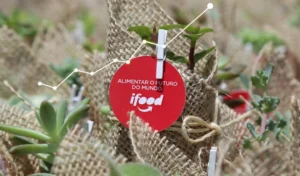In addition to plastic bottles, packaging and bags that pollute the oceans when they are discarded incorrectly, another material is harming this ecosystem. Ocean Cleanup (a Dutch non-profit organization) analyzed plastic fragments collected in the North Pacific and discovered that this trash comes from fishing, reports The Guardian.
The waste found in this research came mainly from five countries that have strong fishing activity: the United States, Japan, South Korea, China and Taiwan.
This new information goes against what was believed about the plastic pollution of this region, attributed to the rapidly developing economic countries of Southeast Asia.
Now, the responsibility is shared by already industrialized countries, with emphasis on a specific type of pollution: abandoned, lost or discarded fishing tools (ALDFG).
Known as ghost gear, this trash is made up of fishing nets, ropes, wires, traps and other tools, often made from durable plastic. It is estimated that between 500 thousand and 1 million tons of ALDFG are spread across the oceans per year, which corresponds to around 20% of marine plastic litter.
Why are these ghost devices so dangerous?
According to the study, abandoned fishing tools end up in deeper areas of the oceans, often hidden and in dark parts. This makes marine animals more easily trapped and can threaten ecosystems such as coral reefs and seagrass meadows.
According to The World Wide Fund for Nature, fishing litter is the most lethal form of marine plastic: 66% from marine animals, including all species of turtles and 50% from seabirds, are subject to entanglement or entrapment by ghost gear. Christina Dixon, oceans campaign lead at the Environmental Investigation Agency calls this trash “the invisible killer.”
Who discards tools at sea?
Research indicates several causes that lead to this large amount of fishing trash in the oceans, ranging from sea storms to storage problems and equipment stuck on the seabed. The economic precariousness of fishermen and illegal fishing are also factors that intensify the problem.
However, the voluntary disposal of garbage in the oceans is not one of the main reasons for the large volume of pollution. According to the report, fishing equipment is generally very expensive to replace, and it would not make sense to discard it during use and lose what was caught with it.
How to reverse this problem?
There are biodegradable fishing gear alternatives and satellite-trackable buoys that allow fishermen to recover lost traps. Another option is tool recycling, already available in several ports, which often offer rewards for those who deliver the materials correctly.
Initiatives to recover ghost equipment are also essential to this process, and already exist in the United States. In Canada, it is mandatory to report lost equipment and mark some types of tools, making it possible to track and recover these materials.
The industry also started to do its part. Companies like Thai Union, one of the largest seafood companies in the world, require their tuna suppliers to indicate which parts of their fish aggregation devices are non-biodegradable.
Despite these various initiatives, actions to combat the disposal of fishing equipment in the oceans are still minimal. Recovery work is mainly voluntary, and cannot cope with the large amount of trash already in the oceans.
The expectation is that the scenario will change in 2024, with the legally binding international treaty to end plastic pollution. Negotiations provide the opportunity for combative measures to abandon ghost tools to be mandatory in all countries


